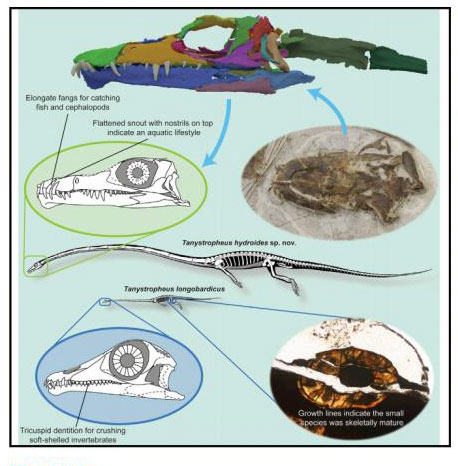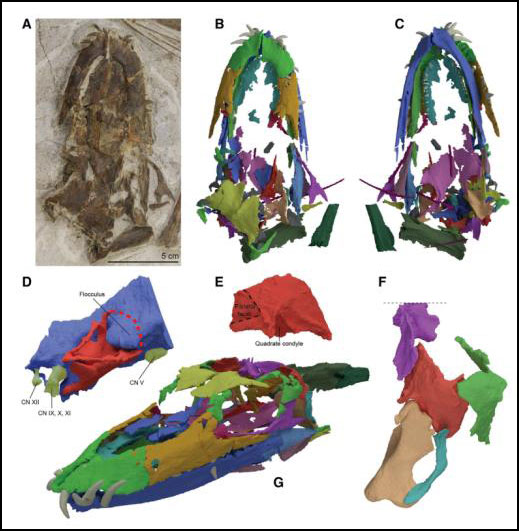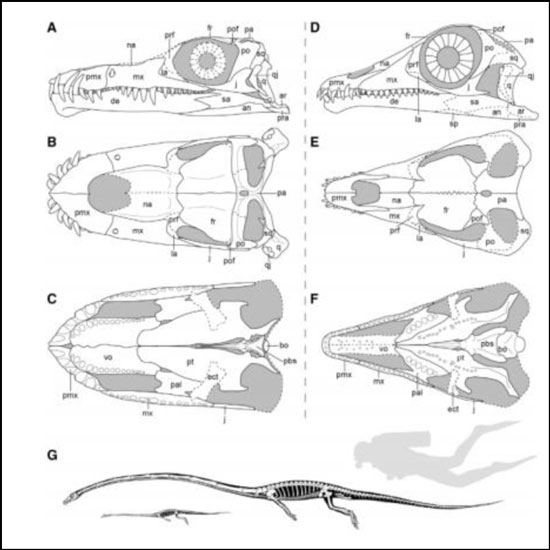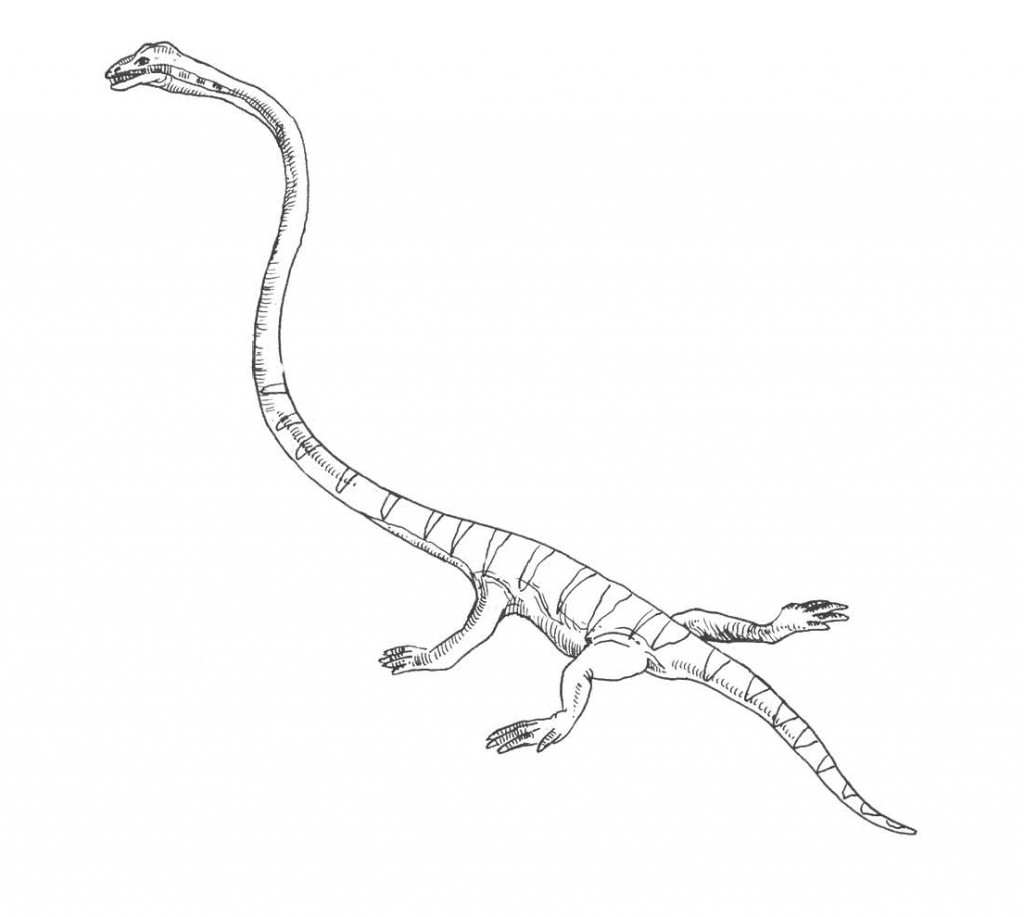New Research Means Tanystropheus Becomes Two
New Study Solves Mystery of Tanystropheus
A newly published scientific paper demonstrates that small specimens of Tanystropheus from the Middle Triassic Lagerstätte of Monte San Giorgio (Italy/Switzerland border), represent a separate species (Tanystropheus longobardicus) and that they co-existed with much larger examples of this genus (Tanystropheus hydroides). Writing in the academic journal “Current Biology”, the researchers which include Olivier Rieppel (Field Museum in Chicago), postulate that the larger species was an aquatic ambush predator, whilst the smaller species fed on other types of prey.
Sophisticated Computer Models Developed from High Resolution CT Scans Identified the Two Species

Picture credit: Spiekman et al (Current Biology)
Tanystropheus longobardicus Remains but Referencing Smaller Species
Tanystropheus represents one of the most bizarre of all the vertebrates known from the Mesozoic. It is characterised by an extremely long and inflexible neck that is almost three times the length of its torso. The palaeobiology of this reptile has remained contentious with a fully aquatic, semi-aquatic and entirely terrestrial lifestyle having been proposed since it was formally described back in 1852 (Hermann von Meyer).
An Illustration of the Bizarre Triassic Archosauromorph Tanystropheus
Picture credit: Everything Dinosaur
The research team used high-resolution CT scans to construct three-dimensional computer generated models of fossil specimens that had been crushed and flattened. The skulls that were constructed revealed that the larger specimens were anatomically very different from the skulls of the smaller specimens. The smaller morphotype was known for having different shaped teeth when compared to the teeth of larger specimens from the same strata. Historically, this had been interpreted as evidence for juveniles of T. longobardicus feeding on different types of prey compared to fully-grown adults.
Lead author of the paper, Stephan Spiekman (University of Zurich), explained:
“The power of CT scanning allows us to see details that are otherwise impossible to observe in fossils. From a strongly crushed skull we have been able to reconstruct an almost complete 3-D skull, revealing crucial morphological details.”
The computer generated models permitted the team to conclude that two species of Tanystropheus co-existed in the Middle Triassic coastal ecosystem. The larger species, which grew up to six metres long, has been named Tanystropheus hydroides, whilst the smaller species is retained as T. longobardicus.
A Crushed Skull and Examples of a Three-Dimensional Skull Map

Picture credit: Spiekman et al (Current Biology)
A Marine Predator
The study also revealed strong evidence that Tanystropheus hydroides was a marine predator. The scans of the skull revealed that the nostrils were on top of the snout, rather like a crocodile’s. The long, pointed teeth in the anterior portion of the jaw enabled it to grab and hold onto slippery prey, the teeth being described by the scientists as a “fish-trap type dentition”. Both species were probably confined to coastal environments, the larger of the two species ambushing small fish whilst Tanystropheus longobardicus may have fed on shrimps and other types of crustacean. Although adapted to a marine habitat, both species probably had to return to land in order to lay eggs.
The co-occurrence of these two species of very different sizes and tooth morphology provides strong evidence for niche partitioning, highlighting the surprising versatility of the Tanystropheus bauplan and the complexity of Middle Triassic nearshore ecosystems.
Line Drawings Comparing the Skull and Bauplan of the Two Tanystropheus Species

Picture credit: Spiekman et al (Current Biology)
The scientific paper: “Aquatic Habits and Niche Partitioning in the Extraordinarily Long-Necked Triassic Reptile Tanystropheus” by Stephan N.F. Spiekman, James M. Neenan, Nicholas C. Fraser, Vincent Fernandez, Olivier Rieppel, Stefania Nosotti and Torsten M. Scheyer published in Current Biology.
Visit the Everything Dinosaur website: Everything Dinosaur.


